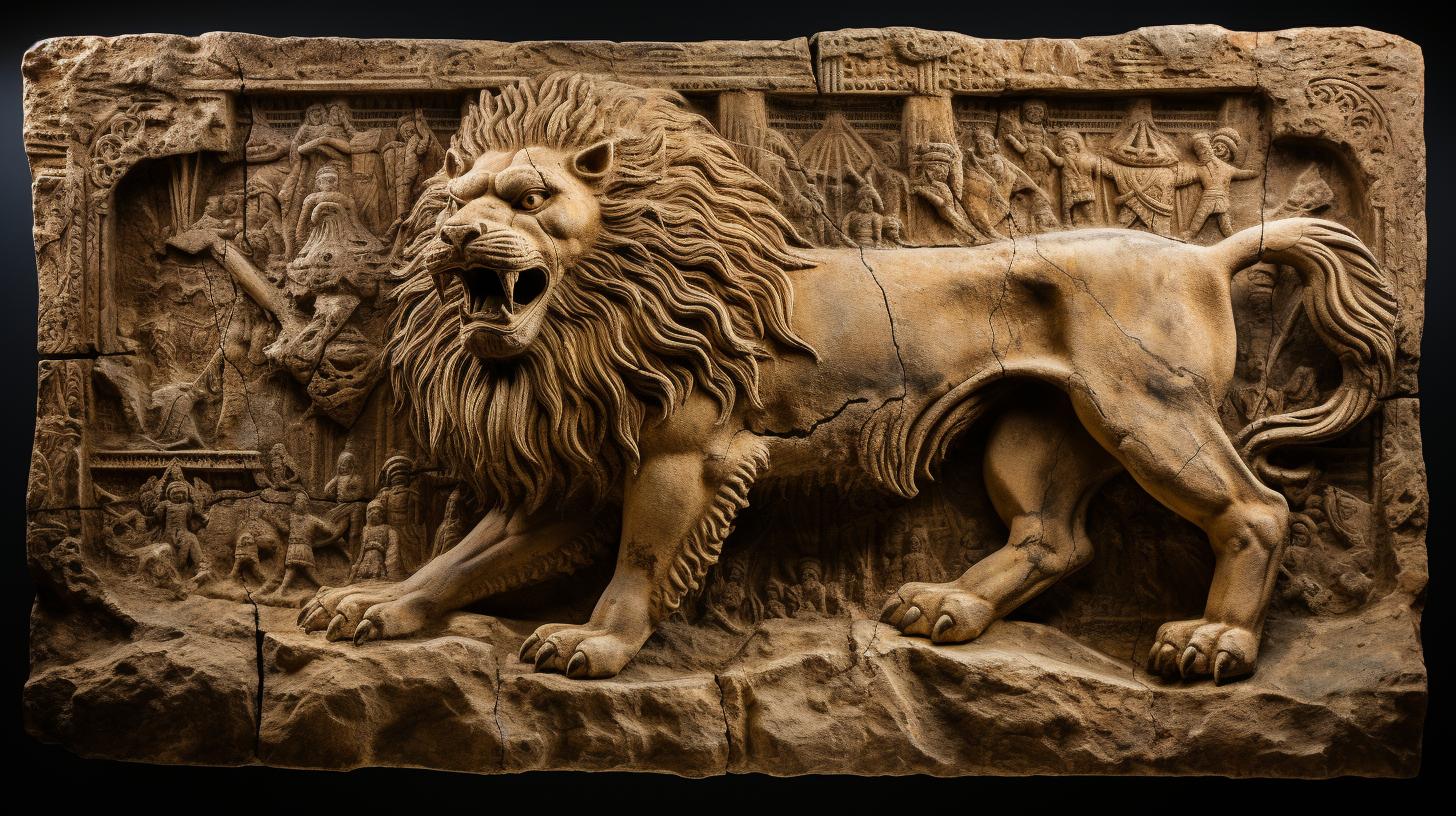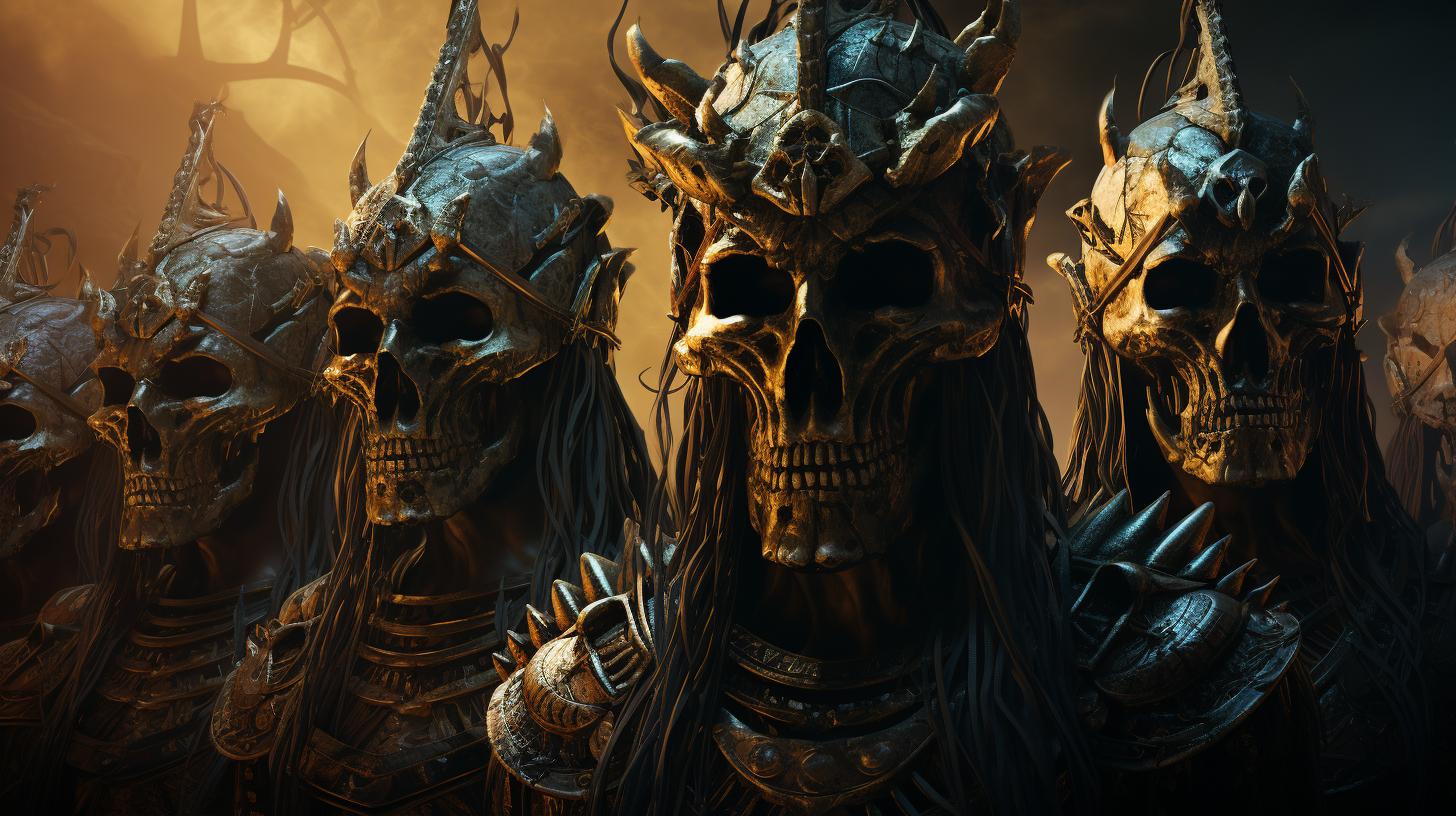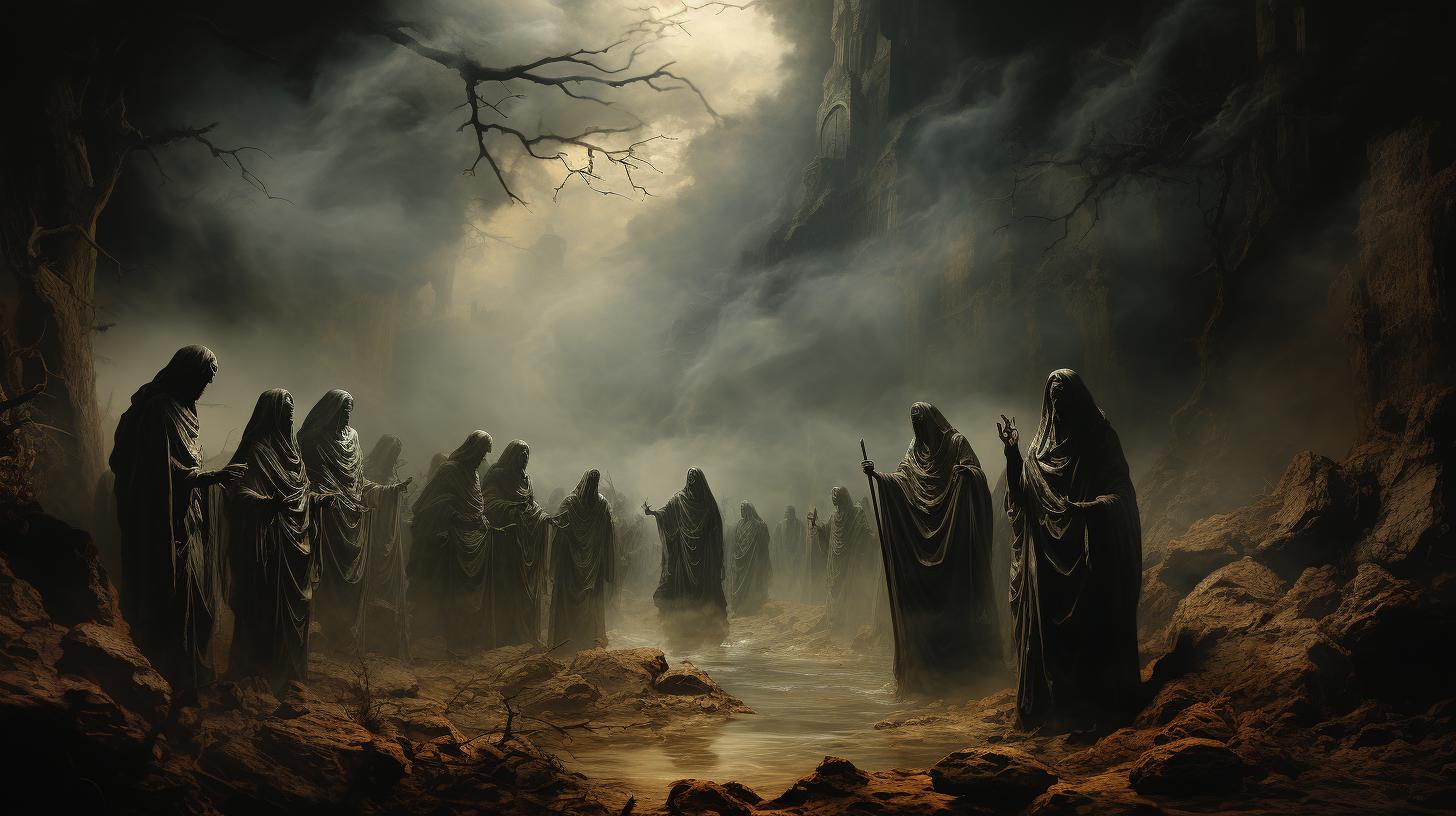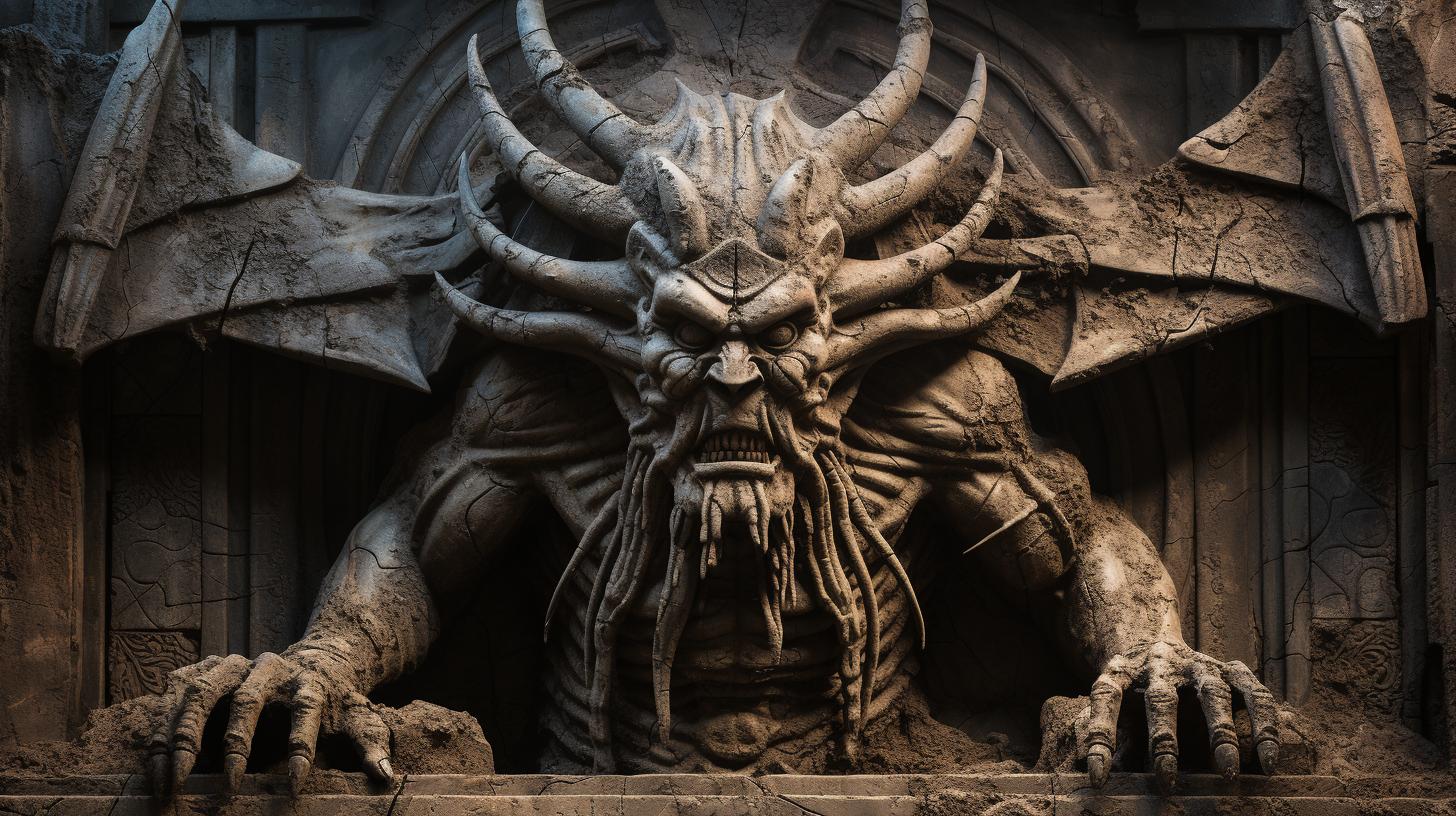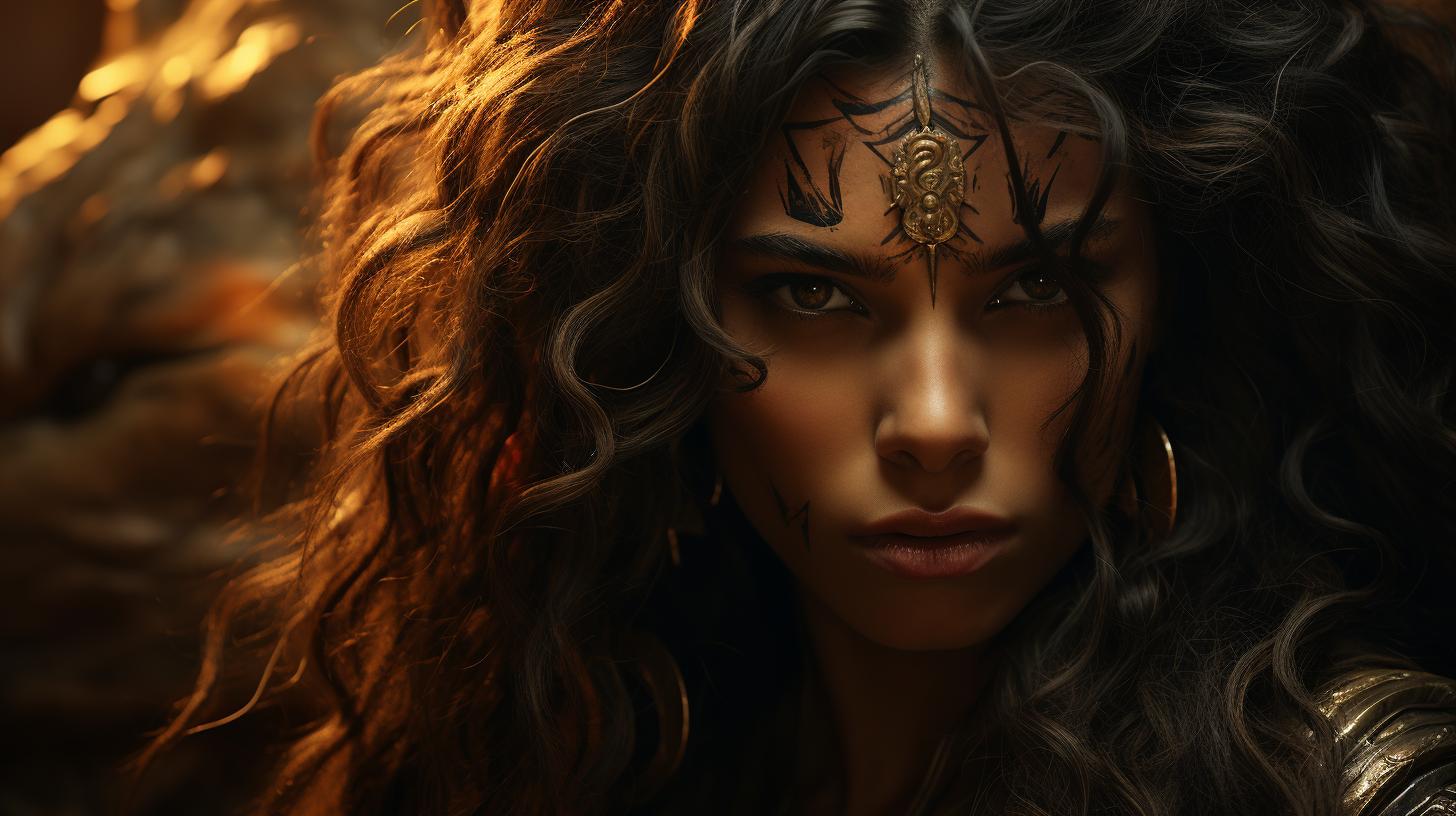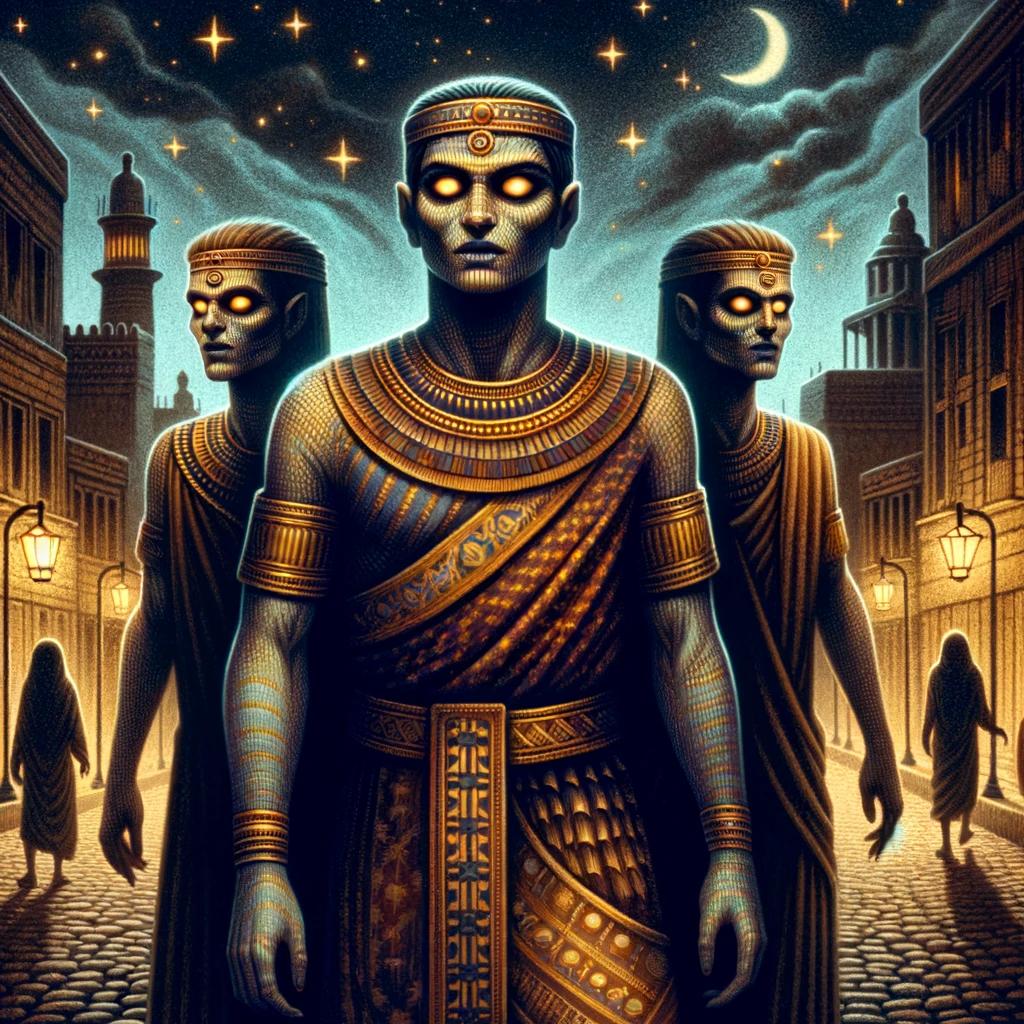Uridimmu: The Fierce Guardian of Mesopotamian Mythology
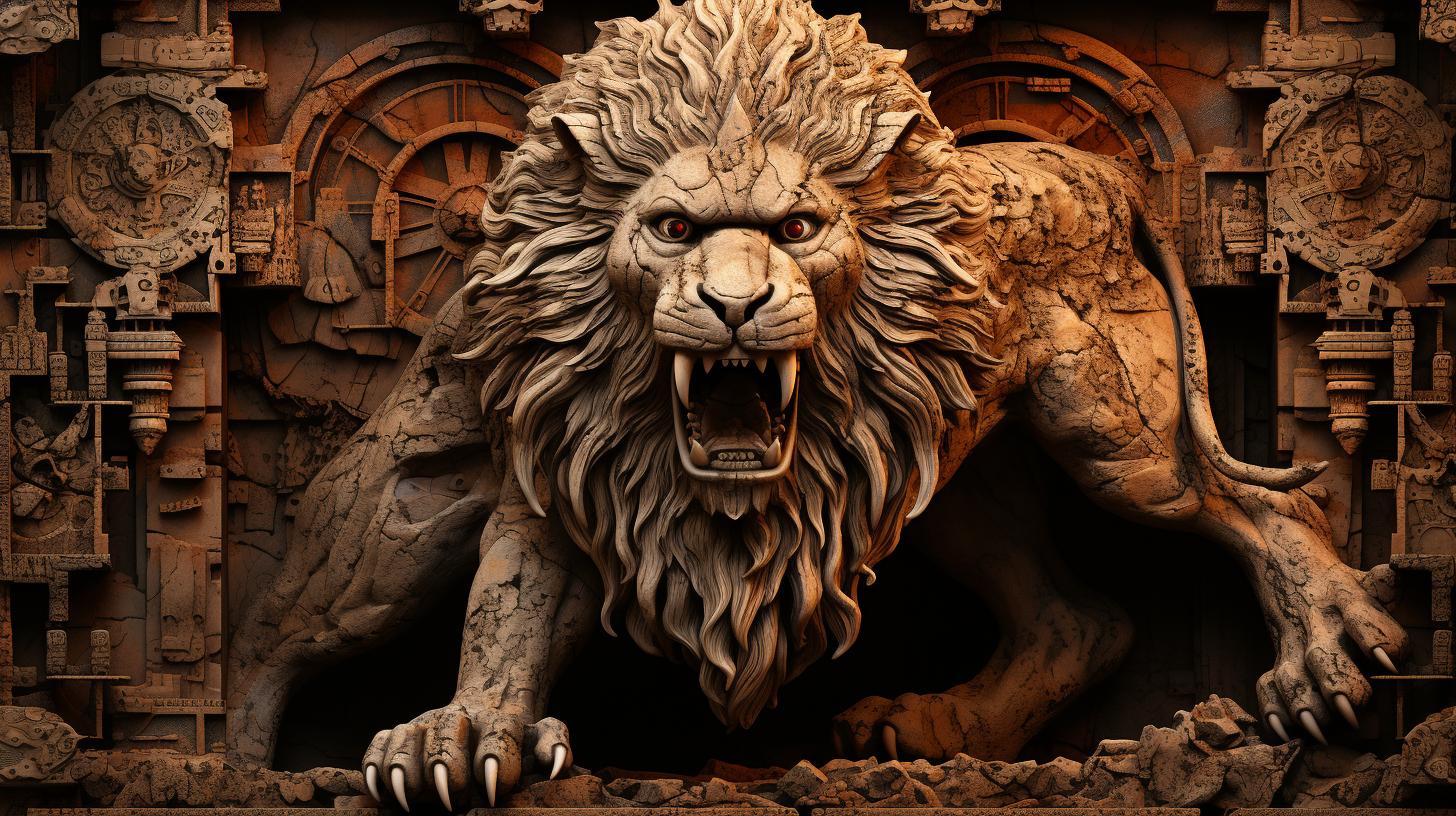
The Uridimmu, a legendary creature in ancient Mesopotamian mythology, was described as a fierce beast with the body of a lion and the head of a human. It served as a guardian to the Cedar Forest and the entrance to the underworld.
The Uridimmu’s incredible strength and ferocious nature made it a formidable adversary. Associated with chaos and destruction, this divine being was often depicted as a violent beast ready to attack anyone who crossed its path.
Its connection to the celestial realm as symbolized by its association with the Lupus constellation highlighted its power and strength. This article explores the origins, legends, appearance, cultural significance, artistic representations, and modern influences of the Uridimmu creature.
The Origins of Uridimmu
Uridimmu, the legendary creature, has its roots in the ancient Sumerian gods and mythology. The Sumerians, who inhabited Mesopotamia, believed in a pantheon of deities that played a significant role in their lives and stories.
These gods were assigned different domains and powers, and they often interacted with humans in tales of adventure and divine intervention.
Sumerian Gods and Mythology
The Sumerians worshipped a pantheon of gods that represented various aspects of life, such as creation, fertility, and war. Among these deities, several played a crucial role in shaping the mythological background of Uridimmu.
Nammu, the goddess of the primordial sea, and Anu, the god of the heavens, were central figures in the creation myth.
Enlil, the god of wind and storms, and Ninhursag, the goddess of fertility and healing, were also prominent in Sumerian mythology.
These gods and goddesses had complex relationships and interactions, influencing the stories and legends that formed the basis of Mesopotamian culture.
Tiamat and the Babylonian Period
During the Babylonian period, another influential figure emerged – Tiamat, the primordial goddess of chaos. Tiamat’s story is closely linked to the origin of Uridimmu. In the Babylonian creation myth, Enuma Elish, Tiamat gives birth to a pantheon of gods but becomes resentful of their behavior.
As a result, she transforms into a monstrous creature, symbolizing chaos and destruction.
Tiamat’s role as a chaotic force influenced the development of Uridimmu, believed to be descended from the goddess herself.
This connection between Uridimmu and chaos adds depth to its mythological significance and emphasizes its role as a guardian associated with the underworld.
The origins of Uridimmu can be traced back to these ancient beliefs and mythological narratives.
Through the interplay of various deities and the tales surrounding their actions, the legend of Uridimmu came to life as a fearsome and powerful creature, both divine and terrifying in nature.
The Legend of Uridimmu
Gilgamesh and the Epic of Uridimmu
In the ancient Sumerian and Babylonian period, the legend of Uridimmu was immortalized in the epic of Gilgamesh. This epic recounts the adventures of the mighty hero Gilgamesh and his quest to achieve immortality.
Within this epic, Uridimmu is portrayed as a formidable beast who guards the Cedar Forest and the entrance to the underworld.
Uridimmu’s Role as a Guardian
Uridimmu’s role as a guardian plays a crucial part in Mesopotamian mythology. This fearsome creature is often portrayed as the protector of the underworld, ensuring that no intruders disrupt the realm of the dead.
It is believed that Uridimmu’s strength and ferocity make it a formidable adversary for anyone brave enough to cross its path. The legends describe Uridimmu as having an innate connection to chaos and destruction, possibly stemming from its ties to the primal goddess Tiamat.
Uridimmu’s Appearance and Symbolism
Uridimmu, the legendary creature from Mesopotamian mythology, is described as a fearsome being with a unique appearance and deep symbolism. This section explores the creature’s physical attributes, its connection to the primordial goddess Tiamat, and its representation as a symbol of power and strength.
The Human-Headed Lion Creature
One of the defining characteristics of Uridimmu is its hybrid form, combining the body of a powerful lion with the head of a human. This blending of animal and human features represents a fusion of natural strength and intellectual prowess.
Uridimmu’s fierce appearance, with sharp claws and teeth, exemplifies its role as a formidable guardian and protector.
Uridimmu’s Connection to Tiamat
In Mesopotamian mythology, Uridimmu is believed to be descended from Tiamat, the chaotic and primordial goddess associated with the waters of creation. This lineage illustrates Uridimmu’s connection to the forces of chaos and his role as a divine being.
As a descendant of Tiamat, Uridimmu embodies her power and ferocity, using it to safeguard the realms he is entrusted to protect.
Uridimmu as a Symbol of Power and Strength
Uridimmu symbolizes power and strength in Mesopotamian culture.
Its representation as a fierce and fearless creature highlights its role as a formidable guardian. The combination of the lion’s might and the human’s intellect serves as a metaphor for the balance between physical prowess and mental acuity.
As a symbol of power, Uridimmu showcases the dominance and authority associated with divine beings.
Uridimmu in Mesopotamian Culture
Uridimmu held great ritual significance in ancient Mesopotamian culture. This fearsome creature was believed to possess divine powers and was often invoked and propitiated in religious ceremonies. Its association with chaos and protection of the underworld made it an important figure in religious rituals.
Uridimmu’s presence was believed to ward off evil spirits and ensure the safety of the deceased in the afterlife.
The Ritual Significance of Uridimmu
Uridimmu played a central role in various religious rituals performed by the ancient Mesopotamians. The creature was seen as a powerful intercessor between humans and the gods, capable of both delivering messages from mortals to the divine realm and offering protection and blessings to those who paid homage to it.
Rituals involving Uridimmu often entailed sacrifices and prayers, seeking its favor and divine intervention.
Uridimmu as an Intercessor with Marduk
Uridimmu held a special relationship with Marduk, one of the most prominent gods in the Mesopotamian pantheon. As an intercessor, Uridimmu would act as a messenger between Marduk and humans, transmitting their prayers and requests to the powerful deity.
This connection emphasized Uridimmu’s importance in religious ceremonies, where it symbolized the bridge between mortals and the divine.
Other Mesopotamian Mythical Creatures
- Lamassu: Mythological creatures with the body of a bull or lion, wings of an eagle, and the head of a human. They acted as protective deities, guarding the entrances to palaces and temples.
- Anzu: A giant bird-like creature depicted with a lion’s body and an eagle’s head.
Anzu played a role in several myths and was associated with storms and weather.
- Asag: A demon-like creature associated with illness and chaos. Asag was often depicted as a monstrous creature with sharp teeth and a serpent body.
These mythical creatures, including Uridimmu, formed an integral part of Mesopotamian culture and were portrayed in various artworks, pottery, and religious texts.
Their unique characteristics and roles in mythology showcased the intricacies of ancient Mesopotamian belief systems and the importance of supernatural beings in their daily lives.
Uridimmu in Art and Literature
Uridimmu, the legendary creature from ancient Mesopotamian mythology, has left its mark in various forms of art and literature. Its striking appearance and symbolism have inspired artists and writers throughout history.
Let’s explore how Uridimmu is depicted in ancient art and referenced in literary works.
Depictions of Uridimmu in Ancient Art
Ancient civilizations depicted Uridimmu in their artwork, revealing the significance and influence of this mythical creature in their culture. Sculptures, reliefs, and cylinder seals often portrayed Uridimmu as a powerful and fearsome creature with the body of a lion and the head of a human.
These representations showcased its ferocity and protective nature, highlighting its role as a guardian of the Cedar Forest and the underworld entrance.
Ancient artists paid great attention to details, emphasizing Uridimmu’s sharp claws, fierce facial expressions, and muscular body.
These artistic expressions were a testament to the influence of Uridimmu in Mesopotamian society and their belief in the creature’s power and divine connection.
Uridimmu References in Literary Works
Uridimmu also found its way into the written tales of Mesopotamian mythology, leaving a lasting impact on literature. The legendary creature appeared in various texts, including the epic of Gilgamesh, where it guards the Bosque de Cedros and stands as a formidable adversary to those who dare to challenge it.
The fierceness, strength, and mythical origins of Uridimmu continue to capture the imagination of readers and writers alike.
In these literary works, Uridimmu symbolizes chaos, destruction, and the power of the divine.
Its connection to Tiamat, the primal goddess of chaos, adds another layer of significance to its portrayal. Uridimmu’s presence in these narratives as a guardian of the underworld reinforces its role as a protector of the realm of the dead and a force to be reckoned with.
The references to Uridimmu in Mesopotamian literature provide glimpses into the rich mythological tradition of the region, inspiring future generations to explore and delve deeper into the fascinating tales of Uridimmu and its cosmic significance.
- Ancient art depicted Uridimmu as a fearsome creature, with sculptures and reliefs showcasing its powerful and protective nature.
- Literary works, including the epic of Gilgamesh, highlighted Uridimmu’s role as a guardian and its association with chaos and destruction.
- Uridimmu’s depiction in art and its references in literature offer insights into the mythological traditions of Mesopotamia and its cultural significance.
Key Points:
Uridimmu in Modern Culture
Uridimmu, the legendary beast from Mesopotamian mythology, continues to leave a mark on modern culture.
Its captivating nature and rich mythological background have influenced various forms of media, from literature to film and video games. Let’s explore the impact of Uridimmu on popular media and its presence in contemporary mythology.
Uridimmu’s Influence on Popular Media
Uridimmu’s powerful and fearsome image has made it a popular creature in the realm of fantasy and folklore. This mythical creature has inspired the creation of captivating stories, art, and even video games.
- Books and Novels: From epic fantasy novels to modern urban fantasy tales, Uridimmu often finds its way into the narratives. Its imposing stature and mythical prowess make it a fascinating antagonist or guardian figure in many fictional worlds.
- Film and Television: Uridimmu’s appearance and symbolism have occasionally been depicted in fantasy films and television shows, bringing the creature to life on the screen.
Its role as a guardian or fierce adversary adds intrigue and excitement to these visual adaptations.
- Video Games: Uridimmu’s presence can be felt in the virtual realm, as it has become a staple creature in numerous video game franchises.
Players encounter the creature as a formidable boss or as an essential part of the game’s lore, contributing to the immersive experience.
Uridimmu in Contemporary Mythology
While Uridimmu originated in ancient mythological tales, it continues to thrive in contemporary mythology. As new stories and legends emerge, Uridimmu finds its place among the pantheon of mythical creatures in modern folklore.
- Roleplaying Games and Tabletop Games: Uridimmu often features as a captivating entity within imaginative tabletop games and roleplaying adventures. As players embark on quests and delve into the mystical realms, encountering Uridimmu presents an exciting and challenging encounter.
- Artistic Representations: Artists draw inspiration from the Uridimmu’s iconic appearance, incorporating it into their artwork.
Whether through illustrations, sculptures, or digital art, Uridimmu’s fierce visage adds depth and intrigue to contemporary artistic expressions.
- Online Communities and Fan Theories: Uridimmu has gained a passionate following in online communities, where fans discuss interpretations and theories surrounding the creature’s significance and mythical origins.
These communities help keep the legacy of Uridimmu alive.
As we navigate the modern cultural landscape, Uridimmu’s presence remains strong. Its influence on popular media and its continued role within contemporary mythology serve as a testament to its enduring appeal and the power of ancient legends to captivate our imaginations.
.

